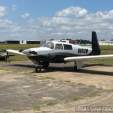Low Time Mooney Pilots, What is your Crosswind Comfort?
-
Members Online
- takair
- Vintagevalves
- Bartman
- EricJ
- LANCECASPER
- Guy123
- mmcdaniel33
- Hank
- Justin Schmidt
- 201er
- JimK
- Flyler
- 76Srat
- cbarry
- Graf_Aviator
- Parker_Woodruff
- toto
- flyboy0681
- Aerodon
- Jake@BevanAviation
- Trente
- PeteMc
- Cfidave
- Skates97
- Steve Dawson
- devyn6seven
- Jsno
- varlajo
- atpdave
- OR75
- Shmoo
- JoeC
- 201Mooniac
- kortopates
- larryb
- N201MKTurbo
- 65MooneyPilot
- Crawfish
- Aaviationist
- DrumGuruEC
- Scottknoll
- ckb


Recommended Posts